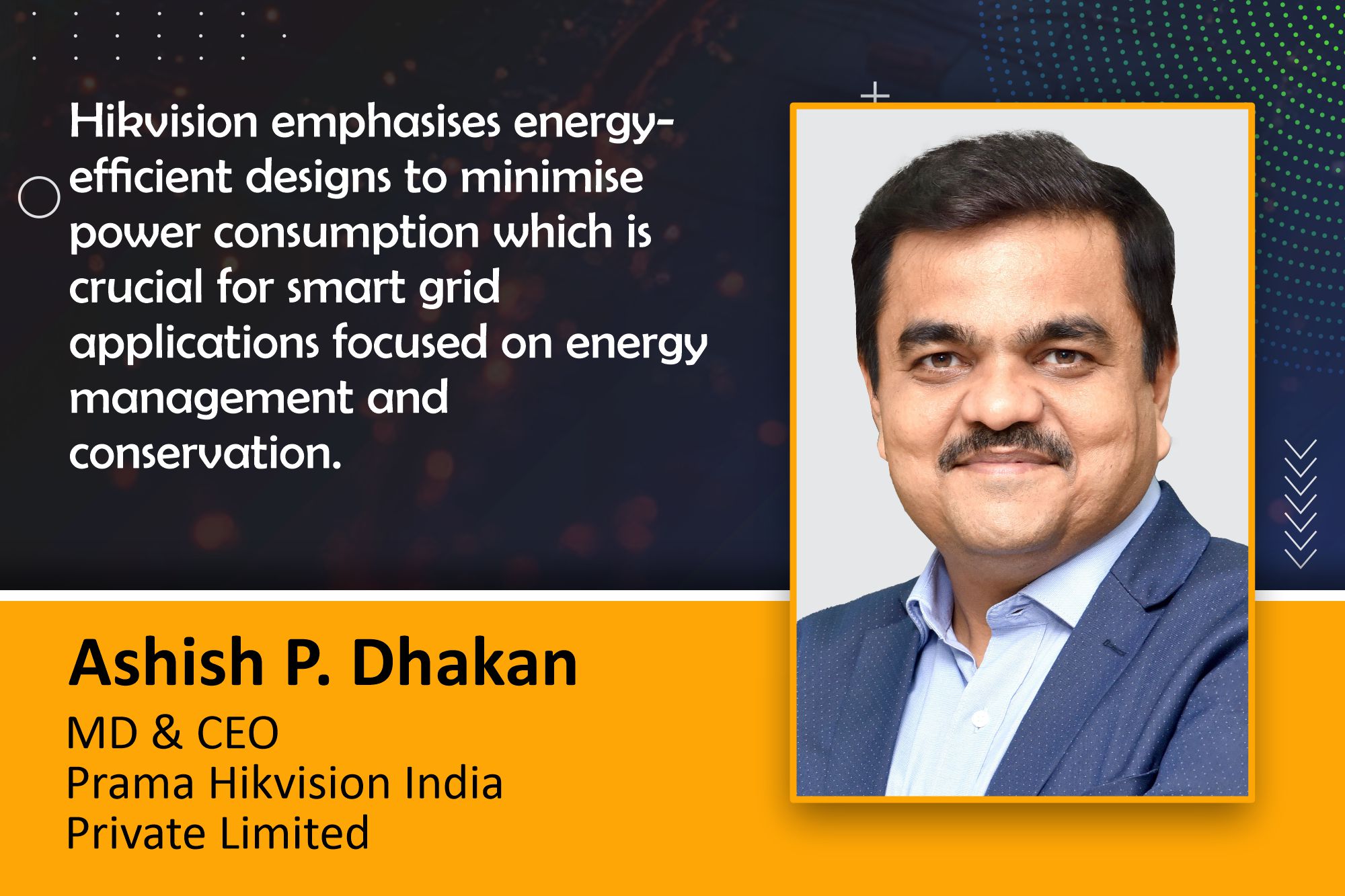Thermal imaging evolving for decentralised power grids
By EPR Magazine Editorial January 27, 2025 8:45 pm IST
By EPR Magazine Editorial January 27, 2025 8:45 pm IST

Prama Hikvision leverages IoT-enabled thermal cameras for real-time monitoring, enabling proactive maintenance and system reliability. This innovation supports smarter, sustainable power distribution, driving digital energy transformation through connected, efficient infrastructure solutions.
Thermal imaging technology is undergoing a transitional shift driven by resolution, sensitivity, and functionality advancements. Modern thermal cameras now offer ultra-high resolutions, enhanced thermal sensitivity, and features like GPS, viewfinders, and ergonomic designs that cater to diverse applications, from industrial maintenance to renewable energy systems. With the rise of decentralised power grids and IoT-enabled smart infrastructure, thermal cameras are essential for real-time monitoring, predictive maintenance and operational efficiency. As the industry evolves, companies like Prama Hikvision are leading the charge. Ashish P. Dhakan, MD and CEO of the company shares more insights.
How is Prama Hikvision transforming thermal imaging to enhance renewable energy systems and decentralised grids?
The increasing adoption of renewable energy is transforming the use of thermal cameras in power generation, transmission and distribution. As an industry leader, Prama Hikvision delivers advanced thermal imaging solutions specifically designed to address the unique requirements of modern renewable energy systems. With the expansion of solar farms, wind turbines and other green energy infrastructure, thermal cameras are advancing to tackle the complex challenges of monitoring and maintaining these critical assets.
In solar farms, thermal cameras detect critical anomalies such as hotspots from micro-cracks, dirt buildup, or defective cells, enabling proactive maintenance and maximising energy output. For wind farms, these cameras monitor turbine components like blades, gearboxes and generators, identifying overheating in key areas to prevent costly failures and downtime.
By integrating thermal imaging into renewable energy systems, Prama Hikvision ensures precision, efficiency and reliability, enabling seamless energy production while reducing operational risks in sustainable power generation.
What are the key recent advancements in thermal camera technology and their industrial benefits?
Recent advancements in thermal camera technology have significantly boosted accuracy, sensitivity, and versatility while optimising costs. Key innovations include thermal detectors with resolutions up to 1280 × 1024 (1,310,720 pixels), thermal sensitivity as low as 20 mK, and the ability to measure temperatures up to 2200°C. Additionally, features such as built-in GPS, compass, viewfinder and an ergonomic design tailored for all thermography applications further enhance functionality. These advancements, combined with improved image processing algorithms, enable precise thermal readings that are particularly valuable in industrial applications like predictive maintenance and R&D. Early detection of issues such as overheating components can significantly minimise downtime and reduce repair costs.
Furthermore, the growing availability of compact, portable, cost-effective, full-range thermal cameras makes this technology more accessible. This democratisation of thermal imaging is empowering large enterprises and small and medium-sized businesses across various sectors, including electrical and mechanical inspections in manufacturing, utilities, agriculture, and construction.
How are IoT-enabled thermal cameras shaping the future of proactive maintenance and system reliability?Like I said earlier, the shift toward decentralized power generation, driven by renewable sources like solar and wind, is transforming the landscape of thermal imaging technology. With the rise of smart grids and IoT, thermal cameras are advancing to address the growing demand for continuous, remote monitoring of power networks. These next-generation systems enable real-time detection of temperature anomalies, allowing operators to identify and resolve potential issues before they escalate into critical failures.
As a market leader and innovator, Prama Hikvision recognizes the convergence of IoT and smart grid technology as a cornerstone of digital energy transformation. By integrating IoT-enabled thermal cameras, operators can access seamless data sharing and real-time insights, fostering a connected infrastructure for proactive maintenance and improved system reliability. This evolution paves the way for smarter, more sustainable, and efficient energy distribution.
What are your expectations for the upcoming budget?
Hikvision India anticipates that the upcoming budget will prioritise initiatives to boost the adoption of advanced testing and measuring devices, including thermal cameras. Provisions supporting renewable energy infrastructure and smarter industrial solutions through targeted incentives could significantly enhance market growth.
We also look forward to opportunities that enable us to deliver high-quality thermal imaging solutions at competitive prices, helping expand our market share and solidify our leadership in the testing and measuring device industry.
Hikvision India is excited to participate in and display its latest solutions at ELECRAMA 2025 at Stall No. H10-D30. ELECRAMA 2025 is one of the premier platforms for global electrical and industrial companies. We plan to demonstrate our latest innovations in thermal imaging, with a special focus on advanced solutions tailored for the energy sector.
**************************
For more information, please visit us at www.hikvisionindia.com
We use cookies to personalize your experience. By continuing to visit this website you agree to our Terms & Conditions, Privacy Policy and Cookie Policy.